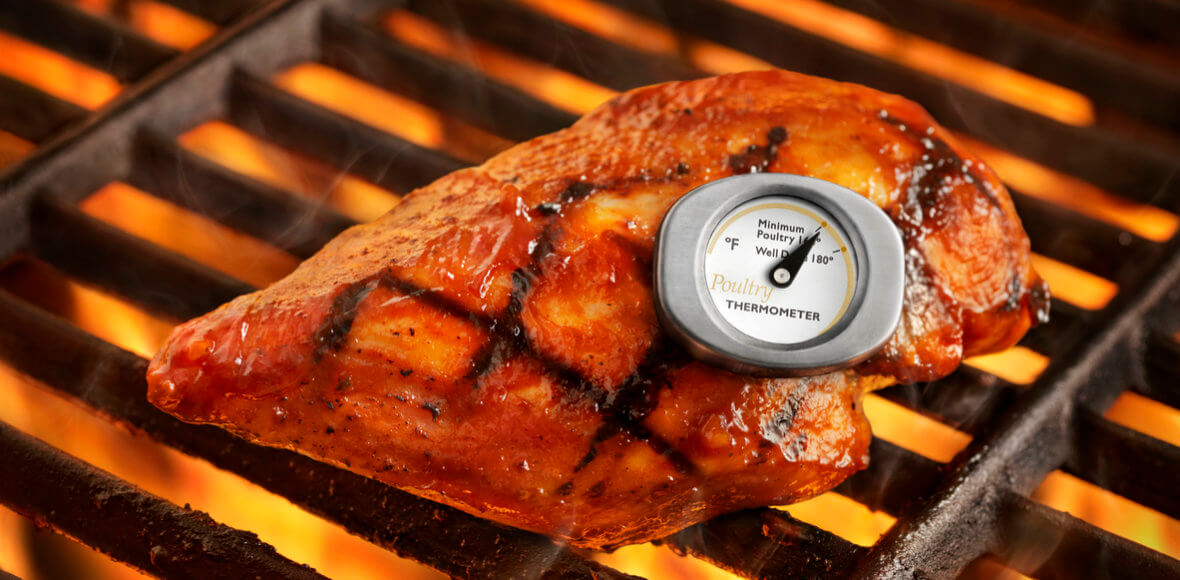
Hot Tips For Cooking With A Food Thermometer
One secret to becoming a master home chef is regularly using a food thermometer to know when your meal is ready. Not only does using a food thermometer take out the guesswork of knowing when your chicken is cooked, it’s a must-do for food safety.
There are a few types of meat thermometers: oven-going and instant-read. Within those categories there are digital and non-digital thermometers. The basic difference between oven-going and instant-read is oven-going thermometers go in the oven (as their title suggests) and they stay in the meat while it cooks, whereas instant-read thermometers are used after cooking to check for doneness.
No matter what type you use, you want to insert the food thermometer into the thickest part of the chicken meat. When using an oven-going thermometer, it’s a good idea to push it in just a little further after you take the chicken out of the oven, to double check that the meat is cooked evenly.
Food thermometers are particularly great when cooking for a crowd and you don’t want to ruin the meal’s presentation by repeatedly cutting into the meat to check if it’s cooked. They give you peace of mind that your meal won’t be under or over cooked, and they help prevent food-borne illness.
If you haven’t used a meat thermometer before, check out our simple tutorial for How to Know When You’re Chicken Is Cooked.
The basic rule of thumb is to cook whole chicken to an internal temperature of 180°F (82°C) and chicken cuts like chicken breast to 165°F (74°C). However, cooking times vary depending on the method (i.e. roasting, grilling, skillet). Keep our chicken cooking times chart handy to reference the recommended internal temperatures and cooking times for different cuts and cooking methods.
Remember, it’s safe to bite when the temperature’s right!